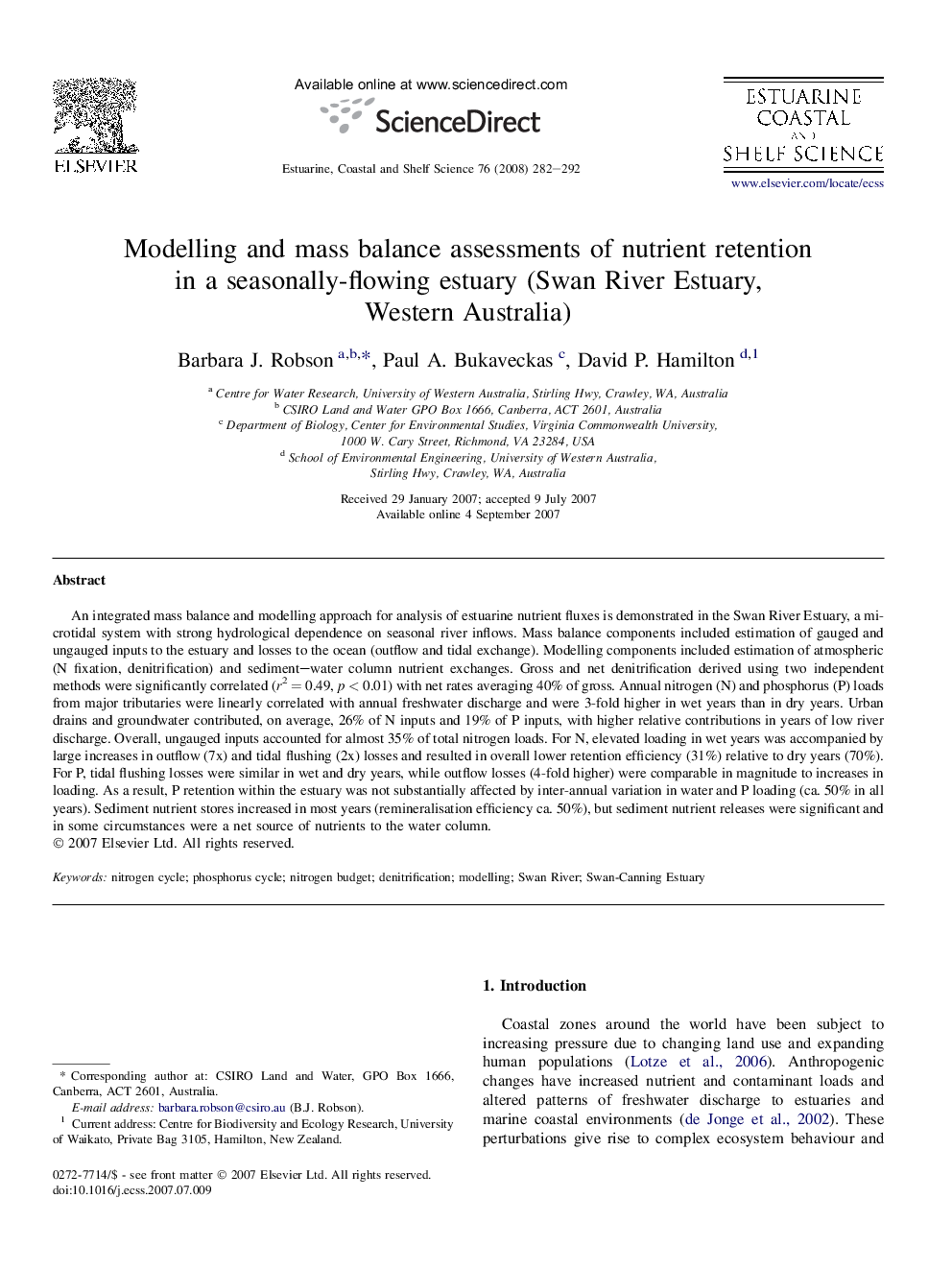| Article ID | Journal | Published Year | Pages | File Type |
|---|---|---|---|---|
| 4542156 | Estuarine, Coastal and Shelf Science | 2008 | 11 Pages |
An integrated mass balance and modelling approach for analysis of estuarine nutrient fluxes is demonstrated in the Swan River Estuary, a microtidal system with strong hydrological dependence on seasonal river inflows. Mass balance components included estimation of gauged and ungauged inputs to the estuary and losses to the ocean (outflow and tidal exchange). Modelling components included estimation of atmospheric (N fixation, denitrification) and sediment–water column nutrient exchanges. Gross and net denitrification derived using two independent methods were significantly correlated (r2 = 0.49, p < 0.01) with net rates averaging 40% of gross. Annual nitrogen (N) and phosphorus (P) loads from major tributaries were linearly correlated with annual freshwater discharge and were 3-fold higher in wet years than in dry years. Urban drains and groundwater contributed, on average, 26% of N inputs and 19% of P inputs, with higher relative contributions in years of low river discharge. Overall, ungauged inputs accounted for almost 35% of total nitrogen loads. For N, elevated loading in wet years was accompanied by large increases in outflow (7x) and tidal flushing (2x) losses and resulted in overall lower retention efficiency (31%) relative to dry years (70%). For P, tidal flushing losses were similar in wet and dry years, while outflow losses (4-fold higher) were comparable in magnitude to increases in loading. As a result, P retention within the estuary was not substantially affected by inter-annual variation in water and P loading (ca. 50% in all years). Sediment nutrient stores increased in most years (remineralisation efficiency ca. 50%), but sediment nutrient releases were significant and in some circumstances were a net source of nutrients to the water column.
